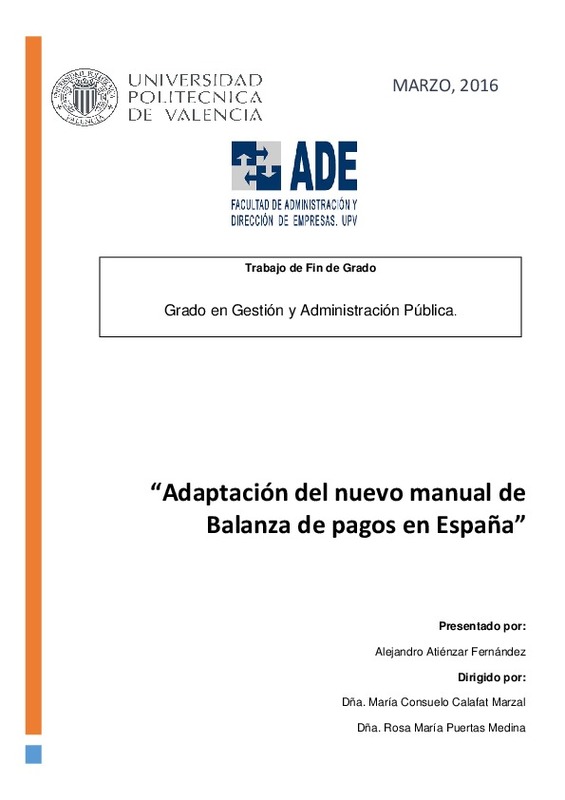JavaScript is disabled for your browser. Some features of this site may not work without it.
Buscar en RiuNet
Listar
Mi cuenta
Estadísticas
Ayuda RiuNet
Admin. UPV
Adaptación del nuevo manual de balanza de pagos en la Unión Europea
Mostrar el registro completo del ítem
Atiénzar Fernández, A. (2016). Adaptación del nuevo manual de Balanza de pagos en la Unión Europea. http://hdl.handle.net/10251/62892.
Por favor, use este identificador para citar o enlazar este ítem: http://hdl.handle.net/10251/62892
Ficheros en el ítem
Metadatos del ítem
| Título: | Adaptación del nuevo manual de balanza de pagos en la Unión Europea | |||
| Autor: | Atiénzar Fernández, Alejandro | |||
| Director(es): | ||||
| Entidad UPV: |
|
|||
| Fecha acto/lectura: |
|
|||
| Resumen: |
[ES] Desde su fundación, el Fondo Monetario Internacional (FMI) mantiene un vivo interés en la formulación y promulgación de pautas para la compilación de estadísticas coherentes, fidedignas y puntuales sobre la balanza ...[+]
[EN] Since its founding, the International Monetary Fund (IMF) maintains a keen interest in the development and promulgation of guidelines for the collection of consistent, reliable and timely statistics on the balance of ...[+]
|
|||
| Palabras clave: |
|
|||
| Derechos de uso: | Reserva de todos los derechos | |||
| Editorial: |
|
|||
| Titulación: |
|
|||
| Tipo: |
|
recommendations
Este ítem aparece en la(s) siguiente(s) colección(ones)
-
ADE - Trabajos académicos [3699]
Facultad de Administración y Dirección de Empresas







